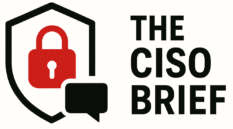Summary Points
-
Data Breach Confirmation: Scania confirmed a cybersecurity incident involving compromised credentials that allowed attackers to access its Financial Services systems, stealing sensitive insurance claim documents.
-
Extortion Threat: Attackers contacted Scania employees via email, threatening to leak the stolen data unless demands were met, with the data later offered for sale on a hacking forum.
-
Attack Methodology: The breach, which occurred on May 28, 2025, was facilitated by stolen credentials from an external IT partner, allegedly acquired through infostealer malware.
- Impact and Response: The compromised insurance application is now offline, with Scania stating that they notified privacy authorities and launched an investigation, assessing the breach’s impact to be limited at this time.
Underlying Problem
In a significant cybersecurity breach, Scania, the prominent Swedish automotive manufacturer and member of the Volkswagen Group, confirmed that its Financial Services systems were compromised, leading to the theft of sensitive insurance claim documents. The breach occurred on May 28, 2025, when attackers exploited stolen credentials from an external IT partner, likely obtained through infostealer malware. Following the breach, the perpetrators, operating under the alias ‘hensi,’ contacted Scania employees via email, threatening to leak the stolen data unless their demands were fulfilled. The incident was first reported by the threat monitoring platform Hackmanac, which highlighted the hacker’s forum post advertising the stolen materials to potential buyers.
Scania responded to the breach by informing BleepingComputer, downplaying the incident’s impact while admitting the involved application, “insurance.scania.com,” is now offline. Despite this assertion, the breach raises significant concerns regarding the exposure of personal, medical, and financial data inherent in the stolen insurance claims. The company has initiated an investigation and notified privacy authorities; however, the exact number of individuals affected remains unclear. The unfolding events underscore the vulnerabilities inherent in third-party partnerships and the heightened risks posed by sophisticated threat actors operating in the dark corners of the internet.
Critical Concerns
The recent cybersecurity incident at Scania poses significant risks across the business landscape, as the breach of sensitive information highlights vulnerabilities that can affect not only the company but also its partners, clients, and even broader industries. The exploitation of compromised credentials, particularly through malware targeting external IT partners, underscores the precarious interdependencies among organizations; such breaches can lead to secondary attacks on those trusting the compromised entities. Financial institutions, insurers, and suppliers tied to Scania may also find themselves exposed, risking reputational damage, compliance violations, and potential financial losses if customer data is leaked or misused. Furthermore, the public threat of extortion linked with sensitive documents amplifies the urgency for stringent cybersecurity measures, as any failure to adequately protect information could catalyze a cascading series of breaches, ultimately undermining trust and operational integrity within interconnected networks. This incident serves as a stark reminder that we are only as secure as our weakest link, necessitating a thorough reassessment of cybersecurity protocols and risk management strategies across all organizations involved.
Possible Next Steps
The swift response to incidents such as the Scania insurance claim data breach is crucial in safeguarding organizational integrity and public trust.
Mitigation Steps
- Immediate Notification: Alert affected parties and stakeholders.
- Incident Response Team Activation: Assemble a specialized team to investigate the breach.
- Data Forensics: Conduct an analysis to understand the breach’s scope and impact.
- Reinforce Security: Patch vulnerabilities and enhance security protocols.
- Legal Consultation: Engage legal experts for compliance and liability considerations.
- Public Relations Strategy: Develop a communication plan to manage public perception.
- Credit Monitoring: Offer affected individuals credit monitoring and identity theft protection.
- Training Programs: Implement training to fortify employee awareness of cybersecurity threats.
- Regular Audits: Schedule routine assessments to strengthen preventive measures.
NIST CSF Guidance
The NIST Cybersecurity Framework (CSF) emphasizes the importance of a proactive incident response strategy. Reference SP 800-61, "Computer Security Incident Handling Guide," for comprehensive details on structuring effective response protocols.
Advance Your Cyber Knowledge
Discover cutting-edge developments in Emerging Tech and industry Insights.
Understand foundational security frameworks via NIST CSF on Wikipedia.
Disclaimer: The information provided may not always be accurate or up to date. Please do your own research, as the cybersecurity landscape evolves rapidly. Intended for secondary references purposes only.
Cyberattacks-V1

